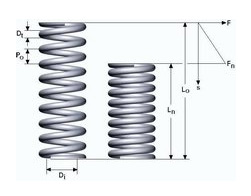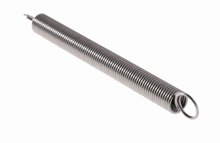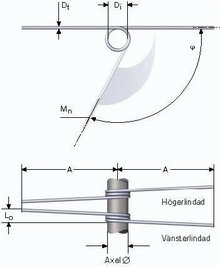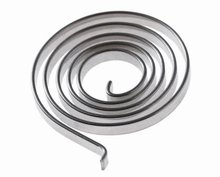What Kind of Spring Do You Need for Your Project?
You’ve designed a product that you’re ready to take to market, but you need some assistance when it comes to deciding on the style of spring or wireform that will enable it to function in the way that you hoped. If this scenario sounds familiar, here at European Springs IE we are experts in determining what solution companies and individuals need for their invention.
Our CNC machinery allows us to create springs and wireforms in a variety of sizes and for numerous specifications, enabling us to offer a truly bespoke service. However, with so many options it can become daunting when determining what style of spring you require.
Therefore, here are a few of the more common springs we create to help you distinguish what it is that you need for your project.
Compression Springs
Undoubtedly, compression springs are our most popular order. They resist a compressive force and are available in an array of shapes and sizes. With the option to choose from conical, cylindrical and an array of different forms, they are a dynamic option.
Furthermore, with multiple materials to choose from and a diverse range of sizes, they can be optimised to perform certain functions to ensure that they are the perfect solution for your product. For instance, the option of using wire springs that are finer than a human hair (from 0.1mm) means they are a viable option for the medical industry.
Tension Springs
Also known as extension springs, these perform by stretching through an application of a force on either side of the coils. When there is no load the individual coils touch, and the spring will always try to revert to this original shape.
This style of spring is most commonly found with lever-based applications, such as door locks.
Torsion Springs
A coiled type of spring, torsion springs use a twisting motion to store energy. The most common types of these springs are single or double varieties, although there are also other variations.
If you’re designing a door hinge or similar device, it is a torsion spring that you will require.
Clock Springs
As their namesake suggests, clock springs are commonly found within watches and wall clocks, but there are also other uses for them. Their exertion of a pushing force from its outer edge as it rotates around a set axis also makes it perfect for scenery retraction in traditional theatres.
Still Unsure About the Type of Spring You Require?
If you still require some guidance about the kind of spring that would work best for your product, please don’t hesitate to speak to one of our experts who will be able to advise you on the perfect spring for your project.
Furthermore, if you know the style of spring or wireform that you need but are unable to determine the exact specifications or size that you require, we are able to help. Our 3D printing capabilities allow us to print a to-scale replica of your product, enabling us to work with it to create the best solution.
For more information, you can call a member of our team on the number at the bottom of this page.



